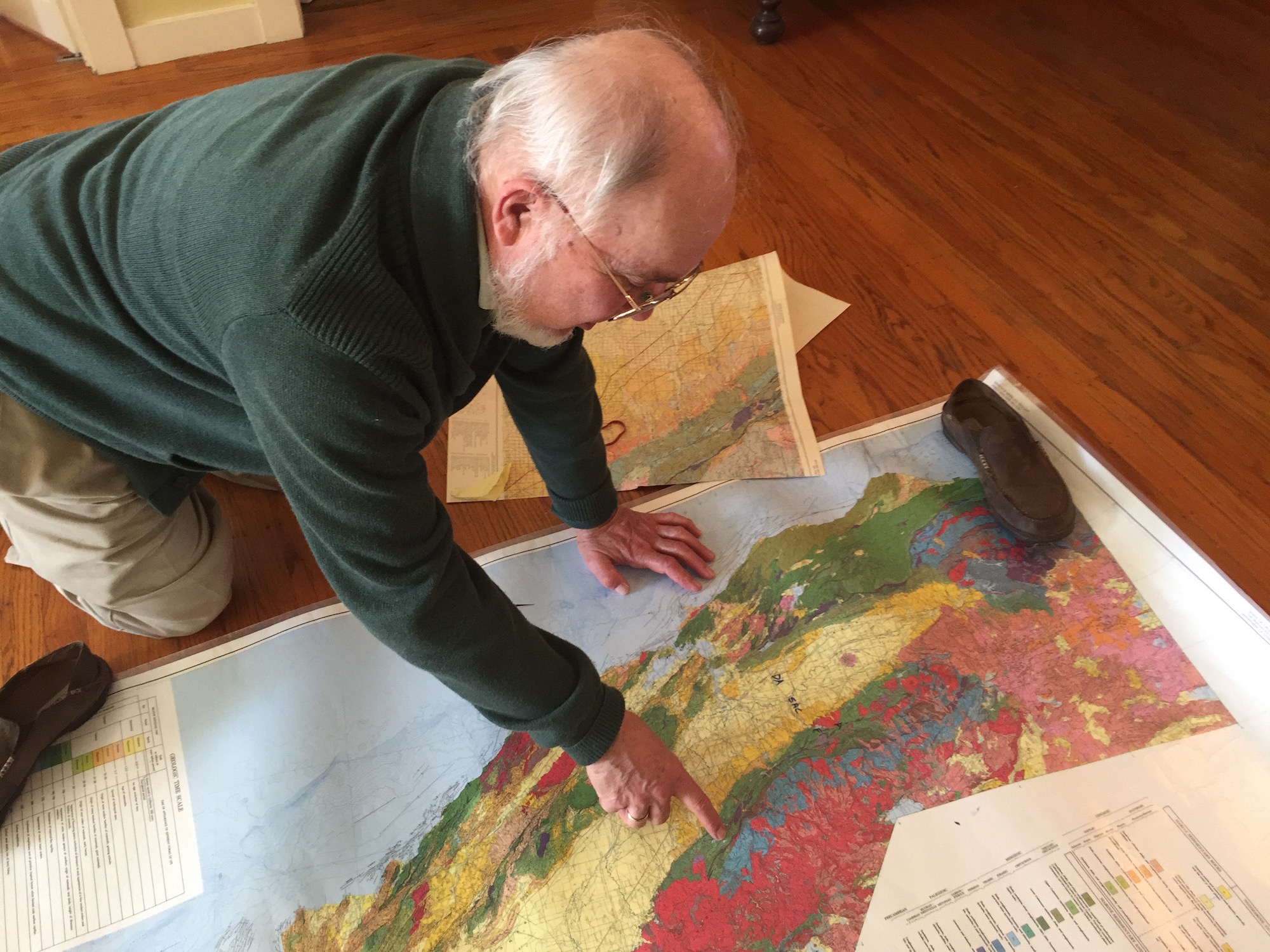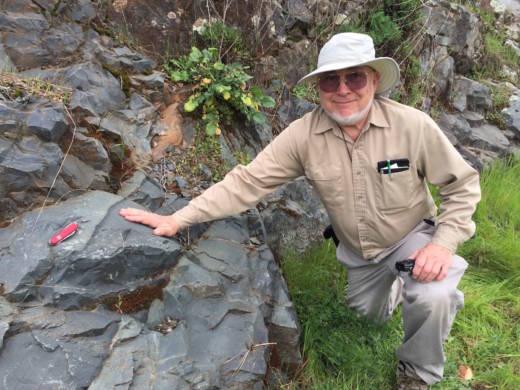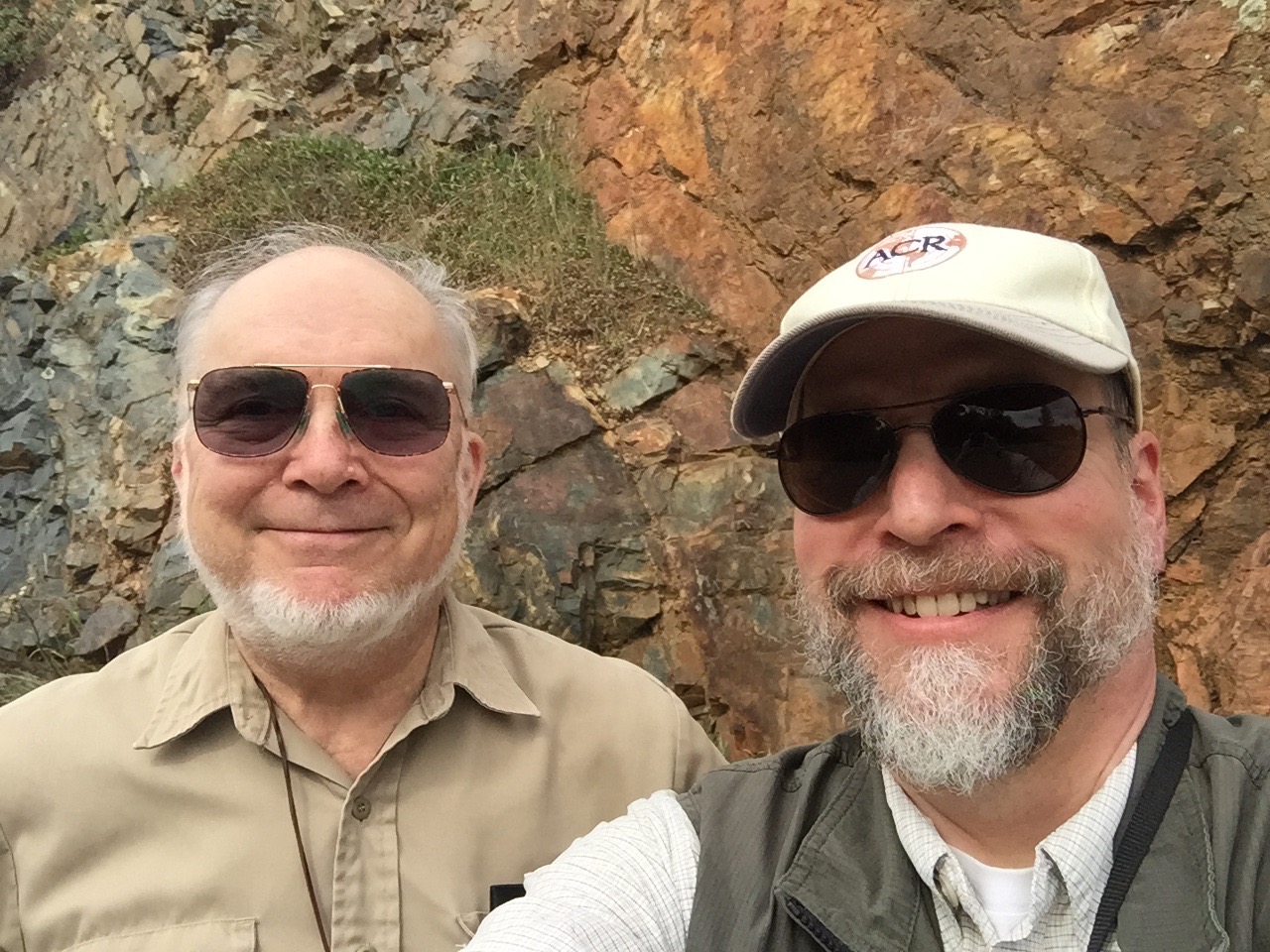The new year will mark a half-century since a “seismic” shift in geology unfolded.
Eldridge Moores was a key thinker in that shift. He died in late October, but the longtime UC Davis professor and field researcher left a permanent mark on geology and a gaping hole in the hearts of those who admired him.
Moores was known as a man of the field but one of my most indelible memories of Eldridge was in his living room in Davis. Here was this near-octogenarian crawling around on all fours, unrolling giant geological maps, slipping off his shoes to weigh down the corners, then pointing out with obvious enthusiasm that the blue areas were rocks as much as 500 million years old — the oldest rocks in the Sierra Nevada.

‘Incompetent’ Rock
I got another dose of that enduring youthfulness two years ago, chasing after him as he led me — at a brisk pace — down to the Yuba River bank. We were in search of the kind of “incompetent” rock that contributed to the catastrophic collapse of two spillways at Oroville Dam.
“You can just dig it,” he said, as he hammered away at a patch of rusty-brown, flaky stone. “It’s on its way to becoming dirt.”
It turns out that weathered rock and rushing water are a poor combination for keeping dams in place.
Apart from his boundless energy, Moores’ real gift was his vision: his ability to “see” geologic history in a pile of rocks. He was one of the first to look at a jumble of stone and see in that the literal construction of the Sierra Nevada — the forces that made these mountains over hundreds of millions of years.
Pillows of Ocean Lava in the Mountains of California
Twenty-five years ago, author John McPhee trailed Moores around the Sierra for his book “Assembling California.” In it, Moores reveals how the Sierra Nevada range didn’t just pop up from the Earth’s crust, as geologists long thought; rather, the building blocks bubbled up from faraway rifts in the ocean floor called “spreading centers,” then transported thousands of miles on moving plates and piled up onto the North American continent.
In March of last year, Moores and I drove into the foothills of Yuba County, where the whole process is laid bare in road cuts along Highway 20. Moores would pull over and dodge the trucks roaring by to show me smooth, black, ocean remnants called pillow lavas bulging from the hillsides, and vertical layers of “sheeted dikes” striping the rock face. Moores is the one who decoded all this.
“It’s a forensic exercise,” he explained. “You’re dealing with an experiment which you didn’t design and is still going on. And you have no eyewitnesses to the processes when they went on 160 million years ago.”
While the notion had already been around for a century, the concept of plate tectonics was still a tough sell when Moores began his career in the 1950s.
“Oh, there was lots of resistance,” Moores recalled.

